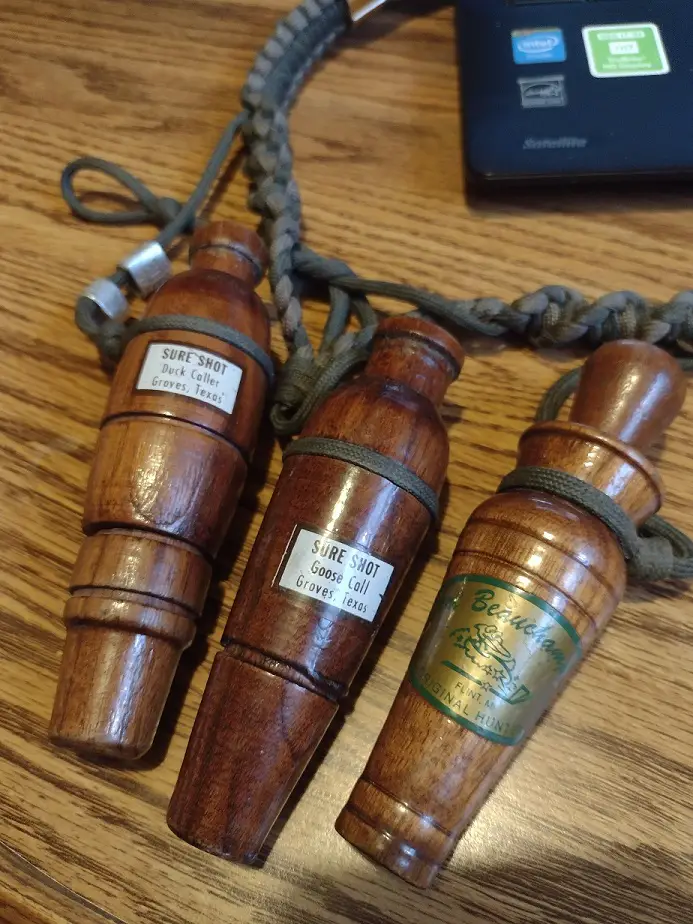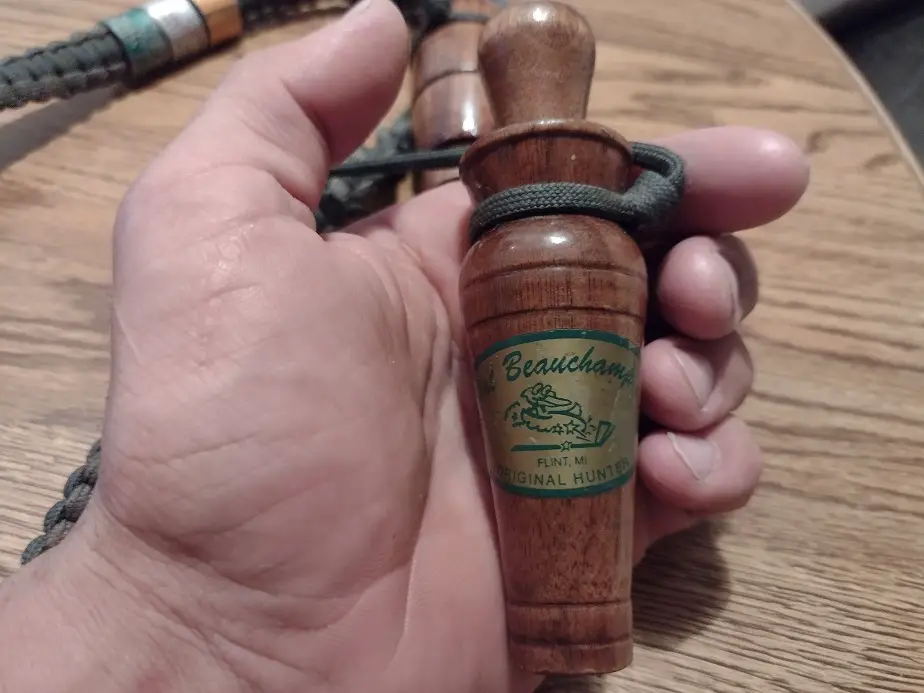
Art Beauchamp’s Standard Walnut
http://www.artbeauchamp.com/products/detail.php?id=15
Although it’s not a pretty name, this one’s a winner! This is the call I cut my teeth on, and I still use it today. I recommend it highly! I always found it relatively easy to work well, and still get great sounds. The design is of the same type that led old Art to win the World Champion of Champion duck calling contest.
The Standard Walnut Duck Call is made of a single walnut dowel, coated with urethane for waterproofing, and fitted with a hand tuned reed. You shouldn’t have to take it apart for tuning when you get it. It is a single reed call, so the sound is pretty clear and somewhat loud if you push it.
The single reed is a great option for a hunter with only one or two calls because it gives you a wider range of tones and volumes to work with. This call is a traditional Arkansas style call, meaning not super shrill, high pitched, or overly loud. It mimics the most common duck’s quack, the female Mallard.
Evan though it’s a Mallard call, it works equally well on most all ducks. In fact, all duck calls imitate a female Mallard unless specifically stated otherwise. They work well pretty much everywhere and on about all ducks, even tough some sound different.
High pitched, very loud duck calls can be great for large open water areas, but for most hunting you’ll do better with a closer hunting type. The Beauchamp Standard Walnut call is a rougher sounding, raspier call. Not overly so, but definitely on the raspy side. It’s a great call for $40.
The lower pitch, raspy call is easier for ducks to locate in a wooded area or on small rivers and ponds where the higher pitch sounds bounce around too much. This call is a mid-range call. I have turned several flocks of ducks around at 200 yards with it, so it definitely still gets out there.
Beauchamp calls are grunting type calls. In the words of the manufacturer, “The ease of this grunt style call makes even the novice a champ”. This call was designed with the beginner in mind, and even though I’m no beginner, I still use it on every hunt. It’s one of the best all around calls you can get.
Beauchamp is a well-known name in Michigan and has been for the last 70 years. Art started making calls in 1940, and eventually sold the business to his son-in-law who still runs it today. you can find this call on his website at http://www.artbeauchamp.com/products/detail.php?id=15
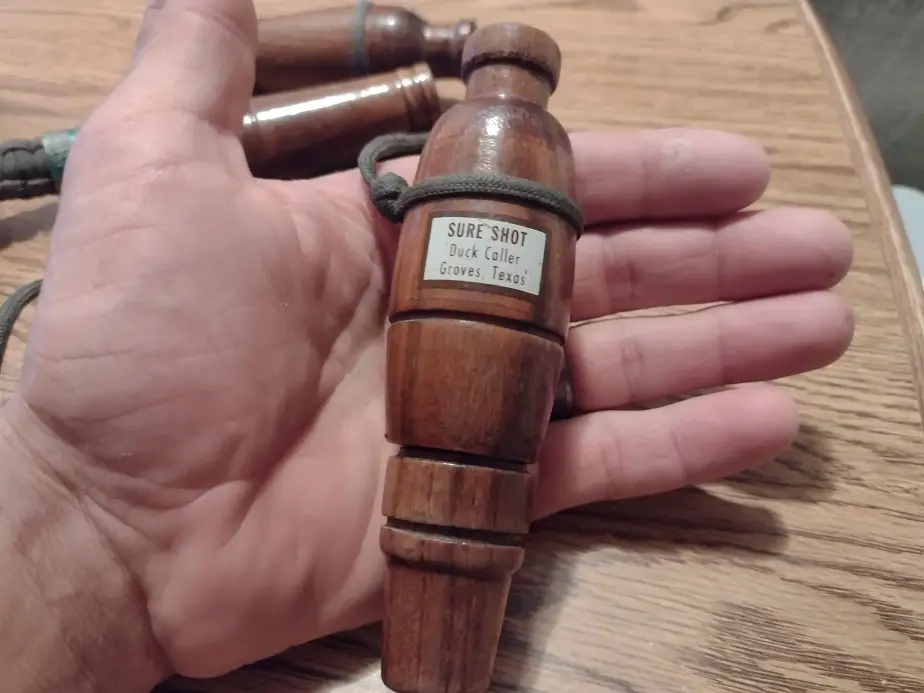
Sure Shot Classic triple Reed
https://sureshotgamecalls.com/the-classic-triple-reed/
This is the other of my personal favorites. It’s a wooden, barrel type call that was designed in the 1960’s.
It’s a rougher, raspier call than the Beauchamp, and the sound doesn’t go as far. This it the call I use in very small areas, or when the ducks are near, but cautions to come within shooting distance.
The Sure Shot is a ridiculously easy call to blow. When I first got mine (from a garage sale) I was shocked to see how easy and how little force is required to get a good quack. That’s mainly because it’s a triple reed call. Triple reed calls require less air pressure to get the reeds going.
They also are far less picky about the position of you mouth and lips on the call. it’s usually a simple thing for a rank beginner to get some duck sounding quacks from a call like this. The call looks both unique and neat. It’s a piece of old-fashioned craftsmanship.
Triple reed calls like this can have some issues. You can over blow them. In other words, if you force too much air pressure into them the reeds can lock up and you don’t get any noise. Nothing will be damaged and the next, softer blow will work fine.
You have to learn how hard to blow on the call. that’s a pretty simple learning curve though; nothing tough about it. The other issue a triple reed call can have is sticking reeds. If they get too full of spit, they can start to stick together and it won’t quack. If that happens, turn it around and blow through the back until it’s cleared out.
Wooden calls have a more warm, mellow sound than the plastic or hyper-expensive acrylic calls. Wood makes the call sound more naturally ducky, but has less of a piercing sound. I prefer wood myself, but plastic is all the rage today.
Overall, the Sure Shot Classic Triple Reed duck call is a great beginner’s choice and it will last a lifetime. I actually have of from the ‘60s. The does woodwork makes them a bit expensive, around $65. If that’s too steep for your wallet, let’s loom at some great plastic options.
This is the link to the Sure Shot product page https://sureshotgamecalls.com/the-classic-triple-reed/

Haydel’s DR-85
You want to talk about affordable function and reliability, you need to look at the DR-85. This is a well-respected classic that nearly every duck hunter has had some experience with. I asked hundreds of other duck hunters which duck call they’d recommend to a beginner and this was at the top of the list.
It’s a no-frills, clear plastic tube-style call. This is a higher pitched call with a raspy but fast, clear sound. It’s a double reed call, making it easy to get notes on, and less prone to sticking than a triple reed. The DR-85 has a decent range of tone, allowing it to be used effectively from mid to close range, say 200 yards and under.
The DR-85 is skinny, lightweight, and cheap. It usually sells for just over $20 dollars. It’s not the toughest call though. it will crack if you step on it. That being said, my dad had one for 20 years until it fell off his call lanyard somewhere in the Saginaw Bay. I bought him a new one from Wal-Mart while on a hunt and he certainly called in ducks with that puppy.
The biggest points about the Haydel DR-85 are that is works, it’s cheap, and you can find one in any duck hunting town. A lot of hunters end up buying one during a hunt when they break or lose their fancy call. if you’re not looking to spend high dollar on a duck call, check out the DR-85. It’s been on more call lanyards than any other call.
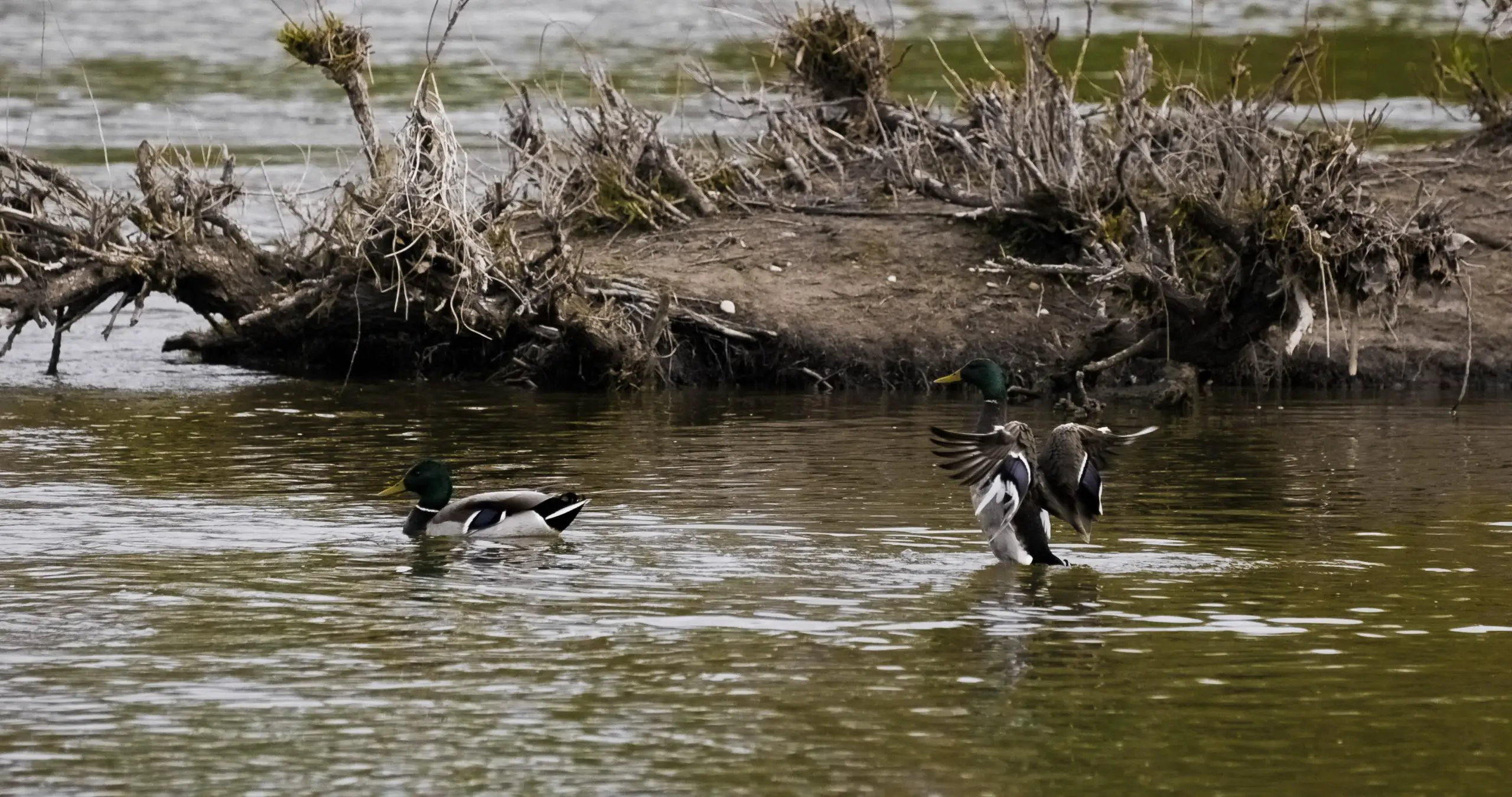
Echo Poly Timber
The most effective of modern styled, affordable duck calls is probably the Echo Polycarbonate Timber. It’s a bit on the quiet end, which is perfect for hunting in a wooded area. They come in double models for a raspy tone, and single reed for a bit louder, sharper tone with more available notes.
This is an immensely popular duck call with very few bad reviews. It is on the quiet side, which some hunters don’t like, but it’s great for most of the common duck hunting situations. The polycarbonate is very tough and crack resistant. It’s made for durability at a low price point, usually selling for $30.
This is another one of the calls that see on many duck hunter’s lanyards, and one of the most recommended and highly spoken of out there. Some have said it may be a bit tricky to learn, but shouldn’t pose too much of an issue. This is a great one to learn how to call ducks with.
Duck Commander Triple Threat
Tis is another cheap call that is made for beginners. It’s got a definite rough and raspy sound, which is pretty nice. It’s a great call for the basic calling techniques, and a more experienced caller can still get a good hi-ball (a sort of calling technique) on it.
It’s mostly low notes but has a number of higher mid-range notes too. This call is best described as rough, scratchy or gravely. The Duck Commanders say this call “is pure duck with a little extra kick”. It’s designed with beginners in mind and it’s a good do-all type call.
Being a triple reed, it may have a tendency to stick if it gets full of spit. To fix that, turn it around and blow on the reverse end, or wait 15 minutes for things to dry out. You do want to try and not fill your call full of spit. Just spit before you call, and don’t call for 20 minutes straight.
There are a few complaints about the location of the lanyard attachment area, whishing it was lower on the call body. That’s the only thing people have to say against it. Overall, it’s a very functional call that will certainly direct ducks to your decoy area.

Haydel’s RL-99 REDLEG
I mentioned the Haydel’s DR-85, now meet its best friend. TheRL-99 is a call for more careful ducks. The Dr85 has amore piercing sound, but the RL-99 has a much more mellow and persuasive sound. It’s the sound of a mature, old hen Mallard. Mature hens are the most cautious ducks. This call compels nervous ducks closer, even towards the end of season.
This is quite different from the DR-85. The two of them make a good pair together. The RL-99 is made to preform fine when wet. It’s certainly an upgrade from the DR85, but at $35, it still won’t hurt the bank too bad. I believe in this call.
Duck Commander Teal Hen call
This call mimics the teal, a very small sized duck. Teal are fast moving, and fun to shoot. A hen teal will quack, but at a much higher, quieter pitch than most ducks. Teal only make simple vocalizations, and this is an equally simple call.
Besides calling in teal, it works as what’s known as a confidence call. in other words, when ducks have heard too many hunters blowing calls and they’re getting scared. This call is different enough from most that it won’t tend to scare the off in late season hunts.
It’s always a great idea to have 2 different sounding calls. Generally, one for long-distance, and one for close up, but it’s also helpful to have a different call on hand if your first one isn’t working for you. Be flexible with your calls.
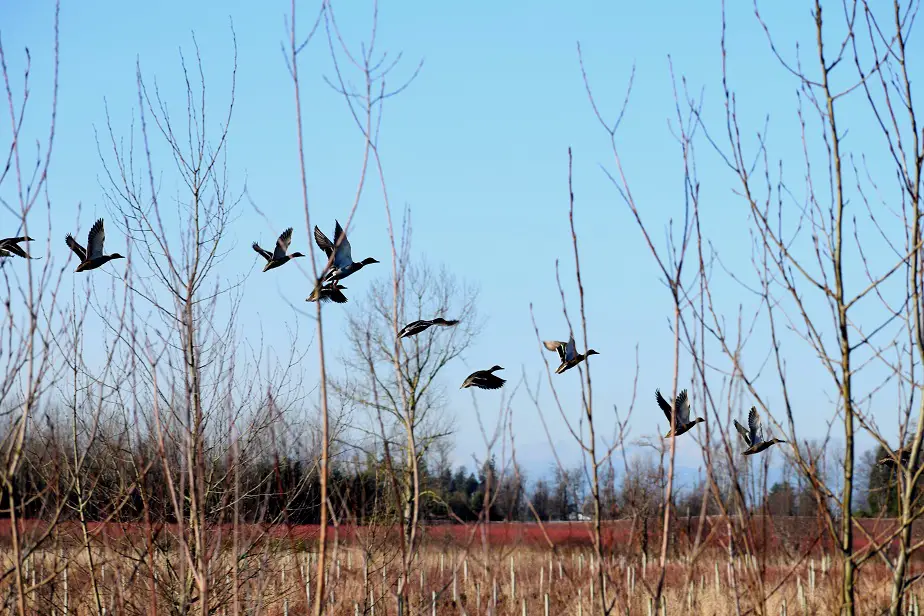
Duck Calling Tips:
Don’t take apart a new duck call. you will probably mess up the tuning. If you do, YouTube will be your friend. Most calls tune relatively similar.
Watch videos on common calling techniques, there are a lot on YouTube. Learn some basic principles and try them to see what works for you.
Listen to recordings or watch videos of actual ducks vocalizing and try to repeat those sounds. Record yourself calling and play it back later, making note of how you sound compared to actual ducks.
Don’t call too much. Duck calls should be used sparingly if no ducks are in sight. If you see ducks in the distance, call to them and watch for response.
As ducks get closer, your call should get quieter and raspier. Loud calls are for long-distance.
When you see ducks, don’t get too crazy with the calls. It’s better to do a little less than too much. With practice, you will learn how ducks respond to calls and you will start to know when calling is a benefit.
Use your hands. A hand on the bottom end of a duck call is used to change the tone and volume, much like how a French horn player uses their hand in the bel of the horn to get different pitches and tones.

